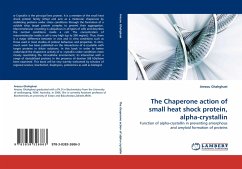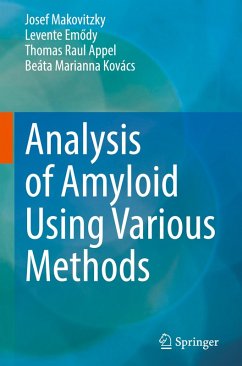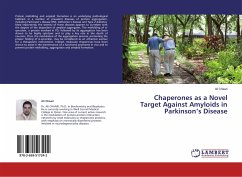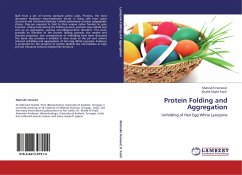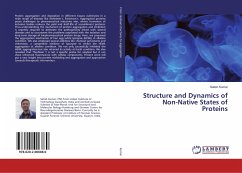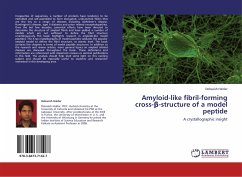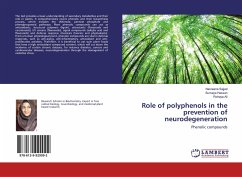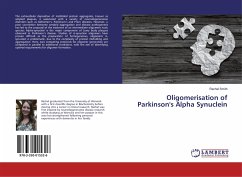
Oligomerisation of Parkinson's Alpha Synuclein
Versandkostenfrei!
Versandfertig in 6-10 Tagen
19,99 €
inkl. MwSt.

PAYBACK Punkte
10 °P sammeln!
The extracellular deposition of misfolded protein aggregates, known as amyloid plaques, is associated with a variety of neurodegenerative disorders such as Alzheimer's, Parkinson's and Prion diseases. However, a poor correlation between amyloid aggregation and disease pathogenesis has led to the proposal of the existence of an intermediate oligomeric toxic species. Alpha-synuclein is the major component of Lewy body plaques observed in Parkinson's disease. Studies of -synuclein oligomers have proven difficult as the preparation of homogeneous, oligomeric -synuclein is problematic, due to the c...
The extracellular deposition of misfolded protein aggregates, known as amyloid plaques, is associated with a variety of neurodegenerative disorders such as Alzheimer's, Parkinson's and Prion diseases. However, a poor correlation between amyloid aggregation and disease pathogenesis has led to the proposal of the existence of an intermediate oligomeric toxic species. Alpha-synuclein is the major component of Lewy body plaques observed in Parkinson's disease. Studies of -synuclein oligomers have proven difficult as the preparation of homogeneous, oligomeric -synuclein is problematic, due to the complexity of protein misfolding and aggregation. Here, two competing protocols for oligomer generation are compared in parallel to additional conditions, with the aim of identifying optimal requirements for oligomer formation.



